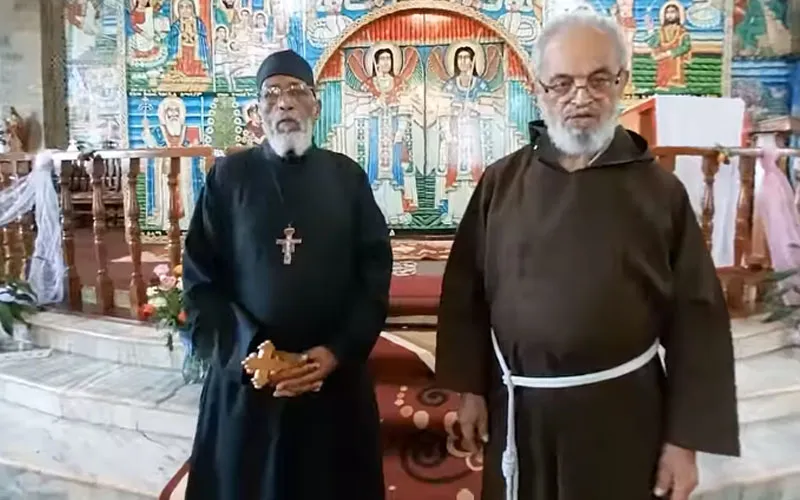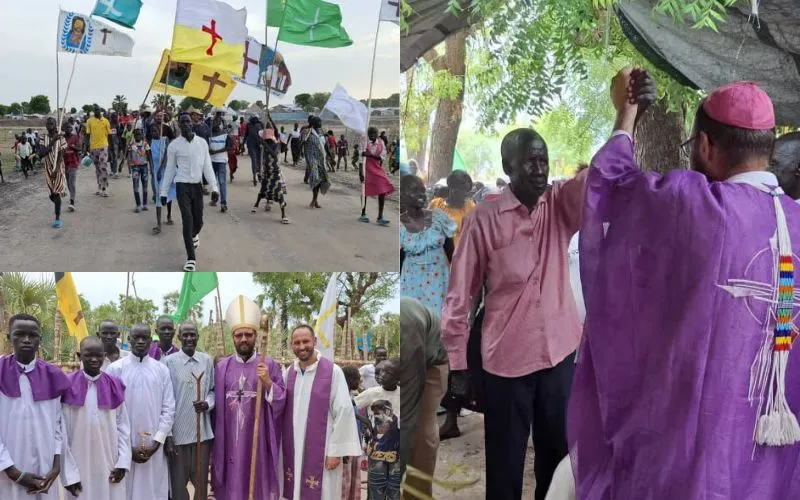Emdeber, 20 March, 2024 / 4:35 pm (ACI Africa).
The structural design, the paintings, and the general aesthetics of St. Anthony of Padua Cathedral of the Ethiopian Catholic Eparchy of Emdeber gives off an aura of paradise.
In a video recording published on the Facebook page of the Catholic Bishops’ Conference of Ethiopia (CBCE), Bishop Musie Ghebreghiorghis of Emdeber explains the architecture and art of the Catholic Cathedral, which is divided into three parts, saying the Cathedral’s innermost part, especially, represents “heaven on earth”.
This part of the Cathedral, which was created in 2003 has paintings representing the sacrifices of the Old Testament that Bishop Musie explains “come to fulfillment through the sacrifice of Jesus Christ.”
“We have the Sacrifice of Abraham through his son Isaac, the sacrifice of Zachariah, that of Aaron, the sacrifice of Abel, the sacrifice of Melchizedek,” the Ethiopian Catholic Bishop says in the video recording published March 14, and adds, “The most prominent figure is Jesus the Pantocrator, whose throne is carried by four animals in each of the four corners.”
On each of the four corners surrounding the Altar, are the faces of a lion, an eagle, the face of a bull, and the face of a man.








